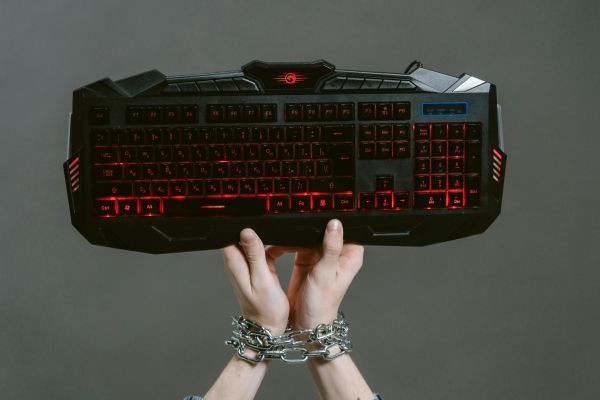Game difficulty has always been a topic of debate. Both players, developers, and critics argue over the levels.
12/10/24 • 285 Views
Game difficulty has always been a topic of debate. Both players, developers, and critics argue over the levels. From the punishing difficulty of a classic arcade game such as Pac-Man to the forgiving designs of modern open-world games, the question of whether games are getting too easy or too hard has evolved along with the industry. With time, the advancement of technology makes game design better. Hence, there is modification in the way of designing game difficulties. There is a more comprehensive choice than ever before for players. This, however, created a problem; are games too soft or too hard for the average player? In this article, we’ll dive into the evolution of game difficulty, the factors influencing it, and the balance that developers are trying to strike in the modern gaming landscape.
The Evolution of Game Difficulty
In the early days of gaming, difficulty was often a reflection of technological limitations. Classic arcade games like Donkey Kong or Space Invaders were hard, but not necessarily by design. They were hard because they did not have a lot of content to work with. Mechanic counts were low, but they did not take it easy to let someone leave a game easily. Few lives, high scores, and spikes in the difficulty are ways of getting someone to spend more time (and money) in the arcade.
As more people accepted the home console and as technology advanced, so did the possible experiences. The Legend of Zelda: Ocarina of Time and Super Mario 64, which came out in the 1990s, were surely among the first games whose difficulty curve was more accessible because it catered to every kind of player: hardcore fans and casual players. But by this time, games such as Dark Souls (2011) prove the players still wanted that slightly harder experience, and people slowly began to realize difficulty had its place in genres for marketability.
The Age of Accessibility and "Easy Modes"
Fast forward to the present, and most modern games, especially open-world games, allow the players a choice of difficulties. Titles like The Witcher 3: Wild Hunt, Assassin's Creed Odyssey, and Spider-Man all let players determine the level of difficulty of their experience. This is also an effect of growing interest in accessibility, ensuring more diverse gamers can enjoy the game.
Normal modes, of course, seem increasingly standard on modern games: softer difficulty, cumberless battles, higher health, or more frequent checkpoints. It is obvious what the intent of such options is: to make games accessible and enjoyable for a broader audience. Developers have realized that difficulty should be a customizable feature so that players can tailor the game according to their preferences.
But this move toward easier experiences has created some controversy. Those players who enjoy a more challenging experience feel that these settings dilute the integrity of the game. Take, for example, a game like Dark Souls. A part of its appeal lies in its brutal difficulty. Some would argue that the "easy mode" option would dilute what made it special to begin with.
Difficult games: are they too hard?
At one end, challenging player games are also selling well. Games like Sekiro: Shadows Die Twice, Cuphead, and Nioh are master games that include high level difficulty due to mastering game mechanics, patients, and precision for success. Such games are so designed with very rare hand holding moments wherein one will get to learn from the errors committed in the game and become much better on account of never giving up.
One of the best ways of looking at "hardcore" games is in light of an even larger trend to make mainstream titles increasingly accessible. It appeals to a committed, devoted crowd of gamers that appreciates the level of satisfaction it gains from accomplishment in defeating really hard challenges. The difficulty, however is that then it can end up being perceived as alienating or frustrating for the vast player base. For most players, this becomes an insurmountable hurdle of enjoyment, and games such as Dark Souls or Bloodborne are too difficult to be enjoyed even by a seasoned gamer.
But is it fair to create games that feel almost punitive to the player? The hardcore games are usually heavy investment time-wise to master, making it a relentless grind if the player does not have time or patience. Then again, for others, there is pride and satisfaction in overcoming such odds. The challenge is to make it balanced enough to give that feeling of reward without eliminating the player who prefers less intensity.
The Middle Ground: Customizable Difficulty and Adaptive Design
Because of the range of players, many developers nowadays are moving away from those very rigid methods of difficulty design. Some games, such as Horizon Zero Dawn or Spider-Man, use adaptive difficulty systems; these automatically make the game difficult or easy based on performance. For instance, the game might make the enemy easier if it senses a player is having trouble with a specific combat section, allowing the player to make progress. If the player is breezing through the game, the difficulty may increase to provide more of a challenge.
This dynamic system could be used to bridge the gap between players looking for more of a challenge and players who want to play something a little less intense. Ghost of Tsushima, for instance, allows players to adjust the difficulty of combat and even how aware enemies are, as well as the speed at which the combat feels. In doing so, the player is able to adjust their experience without sacrificing the underlying design of the game.
The third exciting development is procedural generation, especially with titles like Spelunky 2 or Dead Cells, where the challenge for players is always fresh since their game world is procedurally generated, which makes the experience unpredictable, not knowing exactly what to expect every time a player plays through it. The dynamic difficulty felt from every session, every challenge brought forward, is never quite the same, hence interesting to the casual player as much as the hardcore.
Conclusion: Finding the Goldilocks Point
Whether or not games have become too soft or too hard is again subjective and is dependent on who one asks. The answer for many game developers is to appeal to a wide diversity of tastes and skill levels and is offered in customizable settings, making it suitable to either the casual player and those with a more hardcore need. Whether adjustable settings, adaptive difficulty systems, or procedurally generated worlds, the future of game difficulty will be about giving players more control over how they experience a game.
And that's with an increasingly diverse gaming community, so it is a delicate balance between accessibility and that rewarding feeling of challenge that the medium has come to represent over time. But, on the other hand, evolution will only have to find a balance in that which would be most suited to meet the needs of every player-from the most relaxing experience to an intense test of skill-with the right approach.









